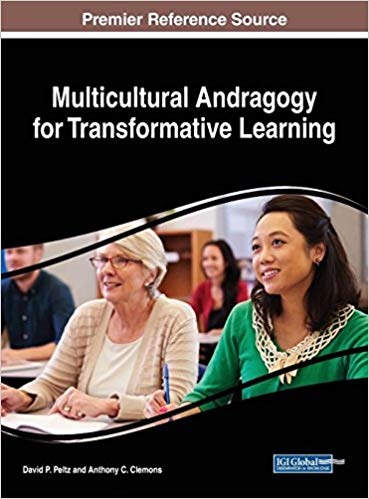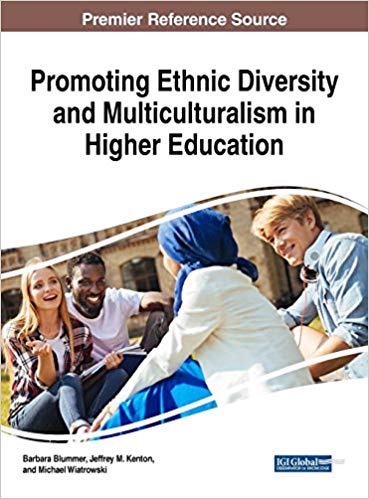multiculturalism
Select an item by clicking its checkbox
Date Reviewed: August 21, 2020
Promoting Ethnic Diversity and Multiculturalism in Higher Education is an essential scholarly publication that examines the interaction between culture and learning in academic environments and the efforts to mediate it through various educational ...
As the world becomes more navigable, opportunities arise for people to live in different countries and for students to study internationally. Such capabilities require universities and other institutions of higher learning to accommodate cultural diversity.
Promoting Ethnic Diversity and Multiculturalism in Higher Education is an essential scholarly publication that examines the interaction between culture and learning in academic environments and the efforts to mediate it through various educational venues. Featuring coverage on a wide range of topics including intercultural competence, microaggressions, and student diversity, this book is geared towards educators, professionals, school administrators, researchers, and practitioners in the field of education. (From the Publisher)

Multicultural Andragogy for Transformative Learning
Date Reviewed: April 18, 2019
In the Foreword and the Introduction of Multicultural Andragogy for Transformative Learning, the editors lay out the goals and the structure of this multi-author volume. But the reader will not get past the first paragraph of the Forward before encountering one of many punctuation errors that plague the volume. In addition to multiple punctuation errors, some chapters contain so many spelling and phrasing errors that the reader is distracted from engaging with the content. Further, the quality of the research, the quality of the writing, and the author’s ability to support his/her assertions varies widely from chapter to chapter. The result is a collection of chapters that are very loosely connected, with little consistency in how each author engages with the intersection of multiculturalism, andragogy, and transformative learning.
The volume is organized into three sections. The first provides the reader with the foundations for understanding the learning theories of andragogy and transformative learning and how both relate to culture. The second section examines andragogy and practice in a variety of cultural contexts. The final section describes “transformative multicultural andragogy” (xvii) in practice. While some chapters stand out as cogent and applicable, too many other chapters suffer from lack of editorial attention and guidance. The first section of the volume would most benefit from said guidance. Each chapter explains the theory of andragogy; many also describe transformative learning. Andragogy is also explained in detail in the Preface, making much (and in one case, most) of these initial chapters repetitive. Rather than re-explaining these theories, these chapters would be better spent connecting adult learning in various contexts to multiculturalism.
Some of the chapters in sections two and three are valuable as stand-alone articles on their stated topics, but as a whole the chapters do not work together to enlighten the reader about multicultural andragogy as it relates to transformative learning. To be fair, the editors state that they “have set a broad scope for the theme” of exploring the intersection of culture, andragogy, and transformative learning (xx). However, only a few of the authors explore all three of these concepts. When a chapter in a volume is notable for addressing the stated topic of the volume, the scope of the volume is perhaps too broad.
In the Preface and Conclusion, the authors state that “the primary focus of this text has been to elicit the connection between cultural perspectives and adult learning” (xxiv, 270), and in the Conclusion, they propose a new learning model representing the relationship between andragogy, transformation learning, and multiculturalism. What one would hope to learn from this volume is how they interact, not just that they do, so that the model can be tested and reproduced in an adult learning environment. The editors are correct that the relationships between these concepts should be explored and described, and that adult education would benefit from such work. However, Multicultural Andragogy for Transformative Learning lacks the focus and editorial oversight to accomplish that goal.

Multiculturalism on Campus: Theory, Models, and Practices for Understanding Diversity and Creating Inclusion, 2nd Edition
Date Reviewed: September 15, 2017
The Introduction to the second edition of Multiculturalism on Campus states that the book’s purpose is to provide “a comprehensive resource for students, faculty, and higher education administrators about multiculturalism and diverse populations on college campuses”(1). In addition to that goal, the second edition sets out, successfully, to give “greater voice to students who are not part of the dominant cultures” (1). The format includes clear and succinct case studies that assist in revealing the experiences of each group of these students on college campuses. Authors include discussion questions at the end of their essays to assist in processing the material and to move the conversation forward.
Arranged into three perspectival parts with substantive essays addressing “Awareness of Cultural Issues,” “Information on Cultural Populations,” and “Critical Consciousness of Cultural Competence,” the book itself is a model of diversity and inclusion insofar as each essay can be understood as a roadmap for those who are just beginning to engage with the topic of multiculturalism on college campuses or it can serve to enrich and affirm the understandings of those who have been working in the area of student development and multiculturalism.
The essays in the section on “Awareness of Cultural Issues” address foundational questions through the application of sociological, psychological, and student development theories. The discussions related to describing multiculturalism and understanding the effects of oppression on student development (Chapters 1 and 2) are filled with insights that can be related to the foundational concepts which have helped to shape curriculum in social justice and Catholic social teaching.
In Part Two, descriptions of the various cultural populations that enrich our college campuses accurately reflect the diverse picture that exists today. Chapters on gender – “Men and Women” (Ch. 12) and “Lesbian, Gay, Bisexual and Transgender Students” (Ch. 13) – as well as the “Adult Student” (Ch. 14), “Students with Disabilities” and “Religious and Spiritual Diversity among College Students” (Ch. 15 and 16) are extremely helpful in presenting a dynamic picture of the reality that is the American college campus today. The information in these chapters is supported with data and cultural insights. Studies cited in each of the essays in this second section serve as significant entry points for further research while at the same time enlightening the newcomer to the diverse cultural context that shapes the lives of today’s college students. The abundance of information contained in the essays may seem overwhelming at times. However, each essay concludes with recommendations and discussion questions that provide support for the development of action plans that focus on inclusion. The questions assist students, faculty, and administrators with engaging in constructive critical discourse that leads to effective strategizing.
Part Three addresses the ways in which the development of “Critical Consciousness of Cultural Competence” can occur. In this section, we come to understand that an intersectional framework is necessary for successful progress in developing the critical consciousness needed to engage in the work of inclusion and diversity. The work of social justice education is noted as holding the key to effecting change or progress in this area (384). The concept of an intersectional framework as presented here can be of assistance to those of us who are teaching courses in Catholic social teaching or peace and justice, as it demands the same competencies as those expected from the application of Catholic Social Teaching. The mastery of content along with the recognition of intersection of the various cultural contexts that inform the lives of students is something that needs to reverberate throughout the curriculum in higher education if we are to move forward as a society. The creation of inclusive campuses is the first step in bringing about real societal change and Multiculturalism on Campus is a valuable tool in making that happen.
